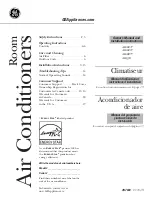
87
(3) Do a leak test of all joints of the tubing (both
indoor and outdoor) and both gas tube and liquid
tube service valves. Bubbles indicate a leak. Wipe
off the soap with a clean cloth after the leak test.
(4) After the system is found to be free of leaks,
relieve the nitrogen pressure by loosening the
charge hose connector at the nitrogen cylinder.
When the system pressure is reduced to normal,
disconnect the hose from the cylinder.
Evacuation
(1) Attach the charge hose end described in the pre-
ceding steps to the vacuum pump to evacuate the
tubing and indoor unit. Confirm that the “Lo” knob
of the manifold valve is open. Then, run the vacu-
um pump. The operation time for evacuation varies
with the tubing length and capacity of the pump.
The following table shows the amount of time for
evacuation:
The required time in the above table is calculated
based on the assumption that the ideal (or target)
vacuum condition is less than 667 Pa
(–755 mm Hg, 5 Torr).
(2) When the desired vacuum is reached, close the
“Lo” knob of the manifold valve and turn off the
vacuum pump. Confirm that the gauge pressure is
under 667 Pa (–755 mmHg, 5 Torr) after 4 to 5
minutes of vacuum pump operation.
Manifold valve
Pressure
gauge
Lo
Hi
Vacuum pump
Outdoor unit
Liquid
tube
Gas
tube
Close
Open
Close
Open
Service port ø7.94 mm
Required time for evacuation
when 30 gal/h vacuum pump is used
If tubing length is
If tubing length is
less than 15 m
longer than 15 m
45 min. or more
90 min. or more
NOTE
Fig. 8-4
06-062 Mini ECO-i II for Technibel 2/8/06 4:32 PM Page 87
















































